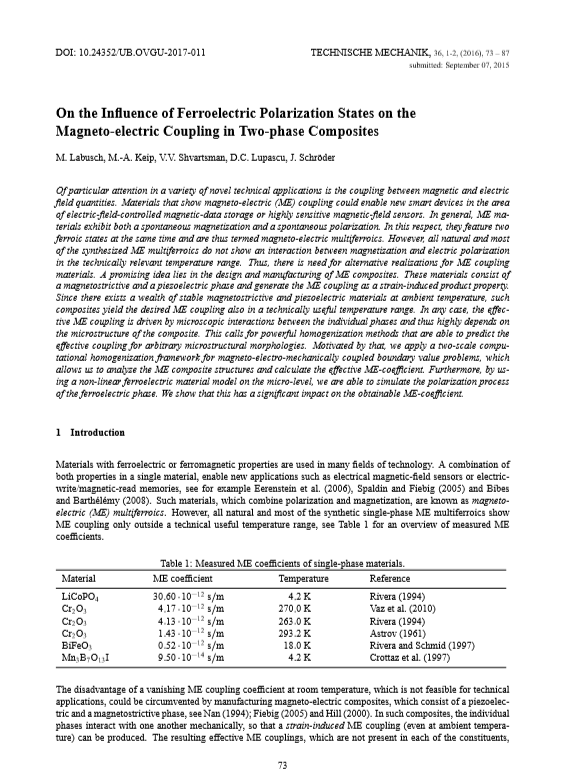On the Influence of Ferroelectric Polarization States on the Magneto-electric Coupling in Two-phase Composites
DOI:
https://doi.org/10.24352/UB.OVGU-2017-011Abstract
Of particular attention in a variety of novel technical applications is the coupling between magnetic and electric field quantities. Materials that show magneto-electric (ME) coupling could enable new smart devices in the area of electric-field-controlled magnetic-data storage or highly sensitive magnetic-field sensors. In general, ME materials exhibit both a spontaneous magnetization and a spontaneous polarization. In this respect, they feature two ferroic states at the same time and are thus termed magneto-electric multiferroics. However, all natural and most of the synthesized ME multiferroics do not show an interaction between magnetization and electric polarization in the technically relevant temperature range. Thus, there is need for alternative realizations for ME coupling materials. A promising idea lies in the design and manufacturing of ME composites. These materials consist of a magnetostrictive and a piezoelectric phase and generate the ME coupling as a strain-induced product property. Since there exists a wealth of stable magnetostrictive and piezoelectric materials at ambient temperature, such composites yield the desired ME coupling also in a technically useful temperature range. In any case, the effective ME coupling is driven by microscopic interactions between the individual phases and thus highly depends on the microstructure of the composite. This calls for powerful homogenization methods that are able to predict the effective coupling for arbitrary microstructural morphologies. Motivated by that, we apply a two-scale computational homogenization framework for magneto-electro-mechanically coupled boundary value problems, which allows us to analyze the ME composite structures and calculate the effective ME-coefficient. Furthermore, by using a non-linear ferroelectric material model on the micro-level, we are able to simulate the polarization process of the ferroelectric phase. We show that this has a significant impact on the obtainable ME-coefficient.





